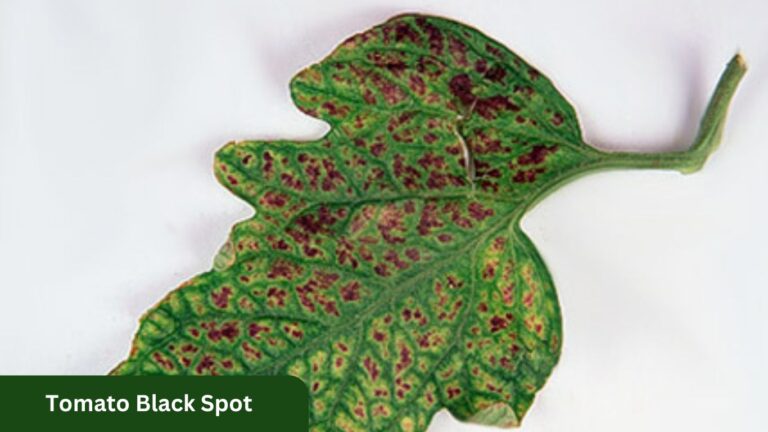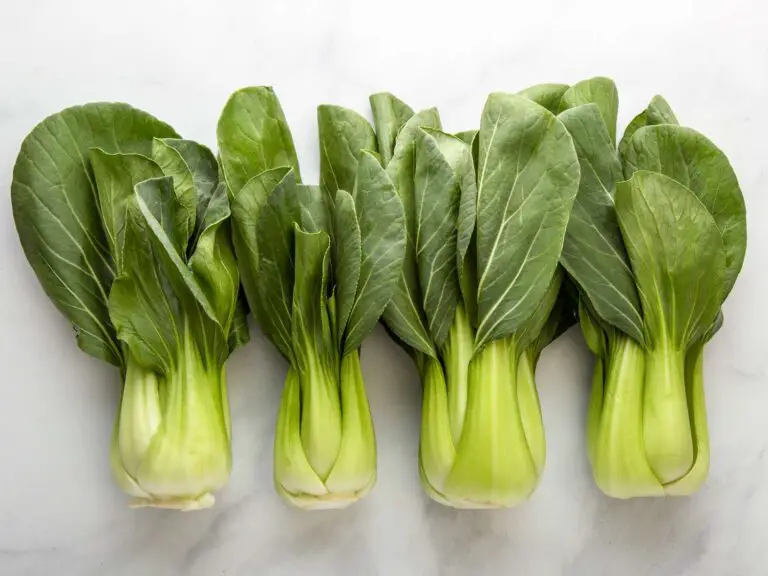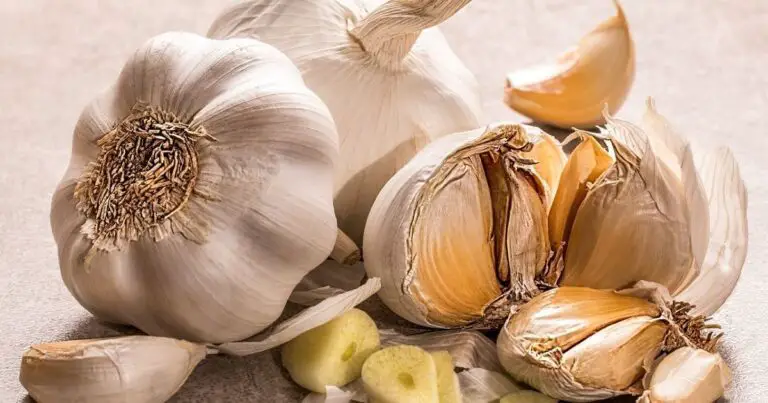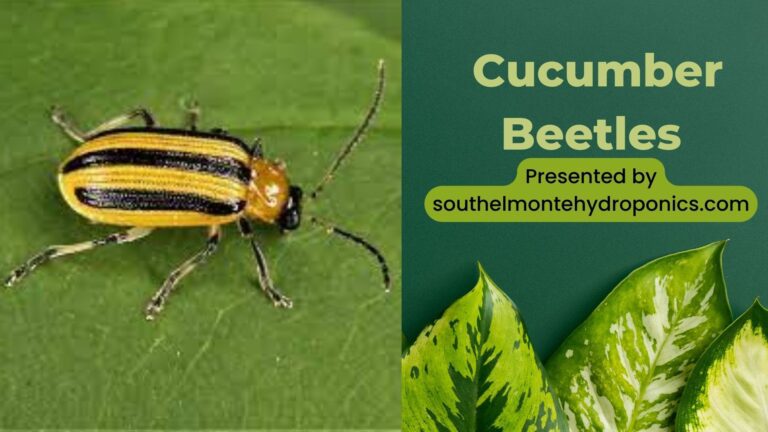Addressing Rust Fungus: Effective Treatment Strategies
Table of Contents
Understanding Rust Fungus: Causes and Symptoms
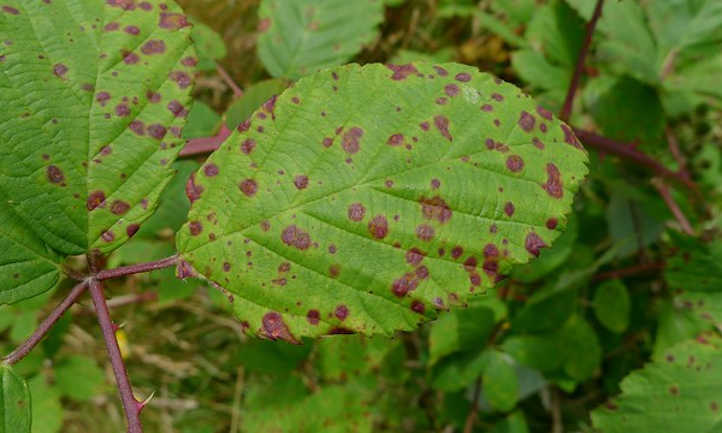
What causes rust fungus in plants? Rust fungus is caused by a group of fungal pathogens known as the Pucciniales. These pathogens primarily attack the leaves of plants, forming distinctive rust-colored pustules that contain spores. These spores can be easily spread by wind, water, or even human contact, leading to the rapid spread of rust fungus to nearby plants. Environmental conditions such as high humidity and moderate temperatures also play a role in the development and severity of rust fungus infections.
What are the symptoms of rust fungus in plants? The symptoms of rust fungus vary depending on the plant species affected, but commonly include the appearance of small, raised pustules on the leaves, stems, or even fruit of the infected plant. These pustules may start as yellow or pale orange, eventually turning a rust-brown color as they mature. In severe cases, the infected leaves may wither, die, and fall off, leading to defoliation and reduced plant vigor. It’s important to note that rust fungus does not just impact the physical appearance of plants, but can also affect their overall health and productivity.
The Impact of Rust Fungus on Plants: Yield Loss and Economic Consequences
Rust fungus is a highly destructive plant disease that causes significant yield loss in various crops. Its impact on plants can be devastating, leading to reduced quality, quantity, and economic consequences for farmers and agricultural industries. The fungus infects the leaves, stems, and fruits of plants, interfering with their ability to photosynthesize, absorb nutrients, and develop properly.
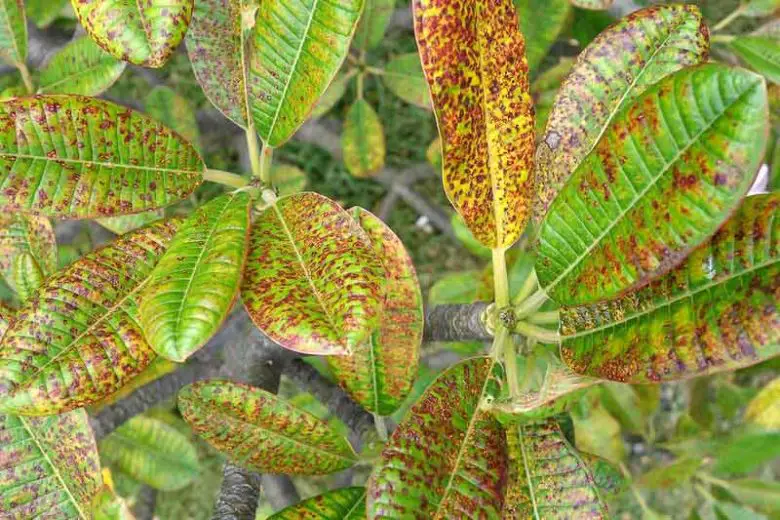
One frequently asked question about the impact of rust fungus is whether it affects only a specific crop or a wide range of plants. Rust fungus is not limited to a particular type of crop but can affect many economically important plants, including cereals like wheat, barley, and oats, as well as fruits, vegetables, and ornamental plants. Its ability to infect diverse plant species further amplifies its damage potential, making it a significant concern for farmers worldwide. Understanding the extent of this impact is crucial in developing effective strategies to mitigate the economic consequences associated with rust fungus infestations.
Identifying Rust Fungus: Differentiating between Common Types
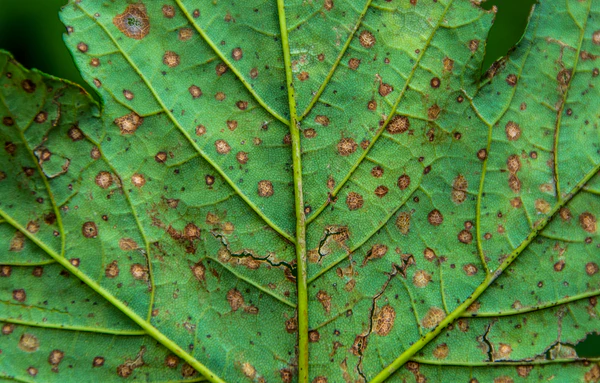
Rust fungus is a common plant disease that poses a significant threat to various crops and ornamental plants. While its impact is well-known, identifying different types of rust fungus can be challenging for plant pathologists and growers alike. To assist in this process, here are some unique frequently asked questions (FAQs) to help differentiate between common types of rust fungus:
1. Can I differentiate rust fungus based on the color of the spores? Yes, the color of spores can be a useful distinguishing factor. For instance, common wheat rust (Puccinia triticina) produces reddish-brown spores, while cedar-apple rust (Gymnosporangium juniperi-virginianae) has bright orange spores. By observing the spore color under a microscope or with the naked eye, it is possible to narrow down the possibilities.
2. Are there specific host plants that certain rust fungus types prefer? Yes, rust fungi often have a narrow range of host plants. For example, soybean rust (Phakopsora pachyrhizi) primarily infects leguminous plants, such as soybeans and cowpeas, while rose rust (Phragmidium spp.) targets various species of roses. Considering the specific host plant can provide valuable clues in identifying the rust fungus species affecting a particular crop or ornamental plant.
By addressing these unique FAQs, it becomes easier to differentiate between common types of rust fungus. However, as rust fungi continue to evolve and adapt, it is crucial to continuously update our knowledge and stay informed on the latest research in this field.
Prevention is Key: Effective Strategies for Rust Fungus Management
When it comes to managing rust fungus, taking preventive measures is crucial. By implementing effective strategies, growers can minimize the risk of infection and protect their crops from yield loss. One commonly employed strategy is crop rotation. By alternating the types of crops planted in a specific area, growers can disrupt the lifecycle of rust fungus and reduce its impact. Additionally, selecting resistant plant varieties can be highly beneficial. Planting cultivars that have been developed to withstand rust fungus infections can significantly reduce the risk of disease development. Moreover, regular monitoring and scouting of fields are essential for early detection of any rust fungus symptoms. This allows growers to take prompt action and implement appropriate control measures, minimizing the potential spread of the pathogen.

To further enhance rust fungus management, proper sanitation practices should be followed. This includes removing and destroying any infected plant debris and incorporating it into the soil. Such debris serves as a potential source of inoculum and can lead to recurring infections in subsequent seasons. Maintaining good air circulation within the crop canopy is also important. This can be achieved through appropriate plant spacing and pruning, as it helps to reduce the humidity levels conducive to rust fungus growth. Finally, irrigation practices should be carefully managed, avoiding over-watering or creating excessive moisture conditions, which can facilitate rust fungus development. Employing these preventive strategies in combination can significantly reduce the risk of rust fungus infections and help ensure healthier, more productive crops.
Cultural Control Methods: Practices to Minimize Rust Fungus Spread
Cultural control methods are essential practices in minimizing the spread of rust fungus in plants. These methods focus on altering environmental and cultural conditions to create an unfavorable environment for the disease. One important step in cultural control is crop rotation. By rotating crops, the buildup of rust fungus spores can be reduced as the disease relies on susceptible host plants to survive. This practice disrupts the disease’s lifecycle and decreases the chances of infection.
Another effective cultural control method is the removal of infected plant material. As rust fungus can overwinter on plant debris, it is crucial to promptly remove any infected leaves, stems, or fruits. This practice helps to reduce the availability of host materials and prevents the disease from spreading further. Taking care to dispose of the infected plant material properly, such as through burning or deep burial, is also crucial to prevent spores from being released into the air and infecting nearby plants. Additionally, maintaining good sanitation practices, such as cleaning tools and equipment, can further minimize the risk of rust fungus spread.
Biological Control: Harnessing Nature’s Allies to Combat Rust Fungus
Biological control offers a promising strategy for combatting rust fungus by harnessing nature’s allies. This approach involves the use of living organisms, such as beneficial insects and microorganisms, to control or suppress the growth and spread of rust fungus. By introducing these natural enemies, we can tap into the ecological balance and reduce reliance on chemical interventions.
One frequently asked question is whether biological control methods are effective in managing rust fungus. While the efficacy of these methods can vary depending on the specific conditions and rust fungus species, studies have shown promising results. For example, the introduction of predatory insects, like ladybugs, can help control aphid populations that act as vectors for rust spores. Similarly, certain species of bacteria and fungi have been found to have antifungal properties and can inhibit the growth of rust fungus. However, it’s important to note that biological control methods should be part of an integrated pest management strategy, combined with other control measures for optimal results.
Chemical Control: Evaluating Fungicides for Rust Fungus Treatment
Fungal diseases, including rust fungus, pose a significant threat to the productivity and health of plants. To effectively manage and control this pathogen, the use of fungicides is often employed. However, it is vital to thoroughly evaluate the efficacy and suitability of these chemicals in treating rust fungus.
One commonly used type of fungicide for rust fungus treatment is the systemic fungicide. As the name suggests, systemic fungicides are absorbed and distributed throughout the plant, providing long-lasting protection. This characteristic is particularly advantageous in combating rust fungus, which can infect various parts of the plant, including leaves, stems, and even fruits. By targeting the internal structures of the plant, systemic fungicides can effectively control the disease and prevent its further spread. However, it is essential to ensure proper application, adherence to recommended dosage, and regularly rotating fungicides to mitigate the risk of resistance development.
Another widely used type of fungicide for rust fungus management is the contact or protective fungicide. These chemicals create a physical barrier on the plant’s surface, preventing the fungus from penetrating and infecting the plant tissues. Contact fungicides exhibit an immediate protective action against rust fungus, making them beneficial for early-stage infections. However, their effectiveness tends to diminish over time, requiring repeated applications. It is important to note that contact fungicides typically do not penetrate into the plant systemically, so thorough coverage of all plant parts is necessary for optimal results. Moreover, timely and regular application is crucial since contact fungicides protect only the areas to which they have been directly applied.
Integrated Pest Management: A Holistic Approach to Rust Fungus Control
Integrated Pest Management (IPM) offers a holistic approach to effectively control rust fungus while minimizing the use of harmful chemicals. By integrating multiple strategies, IPM aims to maintain a healthy balance between the crop, its natural enemies, and the environment.
One unique FAQ about IPM for rust fungus control is, “What role do beneficial insects play in IPM?” Beneficial insects, such as ladybugs and lacewings, are natural predators of rust fungus-causing pests. By encouraging their presence in agricultural systems, farmers can reduce the population of pests that transmit rust fungus. Additionally, the use of companion plants that attract beneficial insects can further enhance the effectiveness of IPM strategies.
Timing is Everything: Optimal Application Techniques for Rust Fungus Treatments
When it comes to effectively managing rust fungus, timing is crucial. The optimal application techniques ensure that treatments are implemented at the right time, maximizing their effectiveness and minimizing the damage caused by the fungus. But what are these optimal application techniques, and how do they contribute to controlling rust fungus?
One commonly asked question is, “When is the best time to apply fungicides for rust fungus treatment?” The answer to this varies depending on the specific type of rust fungus and the plant species affected. Generally, it is recommended to apply fungicides as a preventative measure before the onset of rust fungus symptoms. This proactive approach helps protect plants during their vulnerable stages, such as when they are young or when conditions are highly favorable for rust fungus development. By timing the application correctly, the fungicide can create a protective barrier, preventing the initial infection and subsequent spread of the fungus.
Understanding Fungicide Resistance: Challenges and Solutions
Fungicide resistance is a growing concern in the management of rust fungus. Despite the effectiveness of these chemical treatments, repeated and extensive use has led to the development of resistant strains. This poses significant challenges for farmers and plant pathologists who rely on fungicides as a crucial tool for controlling rust fungus.
One frequently asked question revolves around the causes of fungicide resistance. The answer lies in the genetic variability of rust fungus populations. When exposed to fungicides, some individual fungi possess natural variations in genes that allow them to survive the treatment. These resistant individuals then reproduce and pass on their resistance traits, leading to an increase in resistant strains over time. Factors such as inappropriate dosages, inadequate application techniques, and frequent use of the same fungicide can accelerate the development of resistance. It is important to note that fungicide resistance can also occur in other fungal pathogens, making it a broader concern within the field of plant pathology.
Environmental Considerations: Minimizing Harmful Effects of Rust Fungicide Applications
Rust fungus can cause significant damage to plants, leading to yield loss and economic consequences for farmers and gardeners. To combat this destructive pathogen, the use of fungicides is often necessary. However, it is crucial to consider the potential environmental impacts associated with these applications. While rust fungicides are effective in controlling the disease, they can also have unintended effects on non-target organisms and ecosystems. Therefore, minimizing the harmful effects of rust fungicide applications should be a top priority for sustainable agriculture and horticulture practices.
One frequently asked question regarding environmental considerations in rust fungicide applications is whether there are alternative methods available that pose fewer risks. While chemical control methods can be effective, there are also cultural and biological control strategies that can help reduce the reliance on fungicides. By implementing practices such as crop rotation, sanitation, and the use of resistant plant varieties, it is possible to minimize the need for fungicide applications. Additionally, using biological control agents, such as beneficial insects or microorganisms, can provide a natural means of managing rust fungus without causing harm to the environment. By adopting these integrated pest management approaches, it is possible to strike a balance between effective disease control and environmental stewardship.
Case Studies: Success Stories in Rust Fungus Treatment
In recent years, several success stories have emerged in the realm of rust fungus treatment, showcasing the effectiveness of various strategies. One notable case study involved the implementation of a cultural control method known as crop rotation. By rotating susceptible host plants with non-host crops, farmers were able to disrupt the life cycle of the rust fungus and reduce its spread. This simple yet effective approach not only minimized the incidence of rust fungus in subsequent growing seasons but also enhanced overall plant health and productivity.
Another success story revolves around the use of biological control agents to combat rust fungus. In one particular study, researchers introduced a naturally occurring rust-resistant strain of a specific crop plant. This strain possessed genetic resistance to rust fungus, effectively conferring immunity to the disease. Through careful cultivation and dissemination of this rust-resistant strain, farmers were able to significantly reduce yield losses caused by the fungus. This approach not only provided a sustainable solution to rust fungus management but also demonstrated the power of harnessing nature’s allies to protect crops from devastating pathogens.
Emerging Technologies: Innovations in Rust Fungus Management
Of the numerous emerging technologies in the field of plant pathology, there are several innovative approaches gaining attention for their potential in rust fungus management. One such technology is nanotechnology, which involves the manipulation and engineering of materials at the nanoscale. Researchers are exploring the use of nanomaterials, such as nanoparticles and nanocomposites, as delivery vehicles for targeted deposition of fungicides and biocontrol agents. This precise and controlled application method offers the advantage of reducing the amount of chemicals used, minimizing environmental impact, and increasing the effectiveness of the treatment. However, further research is needed to fully understand the long-term effects and potential risks associated with the use of nanomaterials in rust fungus management.
Another exciting technological development is the use of remote sensing and imaging techniques for early detection and monitoring of rust fungus. These technologies utilize various tools such as hyperspectral imaging, thermal imaging, and drones equipped with high-resolution cameras to capture and analyze plant stress indicators associated with rust infection. By detecting subtle changes in plant physiology and leaf reflectance, these methods can provide valuable insight into the distribution and severity of rust outbreaks, allowing for targeted and timely interventions. By incorporating remote sensing technology into integrated pest management strategies, growers have the opportunity to minimize yield losses and reduce the reliance on broad-spectrum fungicides, resulting in both economic and environmental benefits.
DIY Remedies: Natural and Homemade Solutions for Rust Fungus
1) Can vinegar be used as a DIY remedy to treat rust fungus?
Vinegar, with its acidic properties, has been suggested as a potential DIY solution for treating rust fungus. The high acidity of vinegar is believed to create an environment that is unfavorable for the growth and spread of the fungus. However, it is important to note that vinegar alone may not be a guaranteed cure for rust fungus. While it might have some effect on the early stages of the infection, severe cases of rust fungus may require more targeted and intensive treatments. Additionally, vinegar might have varying degrees of efficacy depending on the specific type of rust fungus and the plant it affects. It is always advisable to consult with a plant pathologist or horticulture expert before using vinegar or any other homemade remedy for rust fungus treatment.
2) Are there any homemade concoctions that can help prevent rust fungus in plants?
While the effectiveness of homemade remedies for preventing rust fungus in plants may vary, there are a few potential concoctions that have been suggested by gardeners and plant enthusiasts. One such mixture includes a solution of neem oil, baking soda, and water. Neem oil is known for its antifungal properties, while baking soda acts as a natural fungicide. By combining these ingredients with water and applying the mixture to susceptible plants, it is believed that rust fungus can be deterred. However, it is important to conduct thorough research and seek advice from experts before using any homemade concoctions, as the efficacy and safety of these remedies may depend on several factors, including plant species, environmental conditions, and the severity of the rust fungus infection.
The Future of Rust Fungus Treatment: Promising Research and Developments
Prominent research efforts are currently underway to explore innovative solutions for rust fungus treatment. One promising area of study involves the use of genetic modification to enhance the disease resistance of susceptible plant varieties. By introducing specific genes that encode for proteins with antimicrobial properties, scientists aim to develop crops that are inherently more robust against rust fungus infections. Although this approach is still in its early stages, preliminary results have shown great potential in increasing plant resistance and reducing yield losses.
Another exciting development in rust fungus management involves the use of nanotechnology. Nanoparticles, such as silver and copper, have been found to possess strong antimicrobial properties and could potentially be utilized as an effective tool against rust fungus. Preliminary studies have shown that when applied in a controlled manner, these nanoparticles can inhibit fungal growth and reduce disease severity. Researchers are currently investigating the optimal formulation and application methods for these nanoparticles, with the goal of developing practical and sustainable interventions for rust fungus control. As these research areas continue to progress, they hold the promise of revolutionizing the way we manage and mitigate the impact of rust fungus on crops in the future.
| Management Approach | Description |
|---|---|
| Cultural Practices | – Proper plant spacing to enhance air circulation. |
| – Removal and disposal of infected plant material. | |
| – Crop rotation to break the disease cycle. | |
| Resistant Varieties | – Select and cultivate rust-resistant plant varieties. |
| – Choose varieties with genetic resistance traits. | |
| Sanitation Measures | – Regularly clean and sterilize tools and equipment. |
| – Practice strict hygiene to prevent disease spread. | |
| – Remove and destroy infected plant debris. | |
| Fungicide Application | – Utilize fungicides at the first signs of infection. |
| – Follow recommended application rates and schedules. | |
| – Rotate fungicides to prevent resistance development. | |
| Biological Control | – Introduce beneficial microorganisms to suppress rust. |
| – Use predators or parasites specific to rust pathogens. | |
| Environmental Modification | – Adjust planting schedules to avoid peak disease periods. |
| – Optimize irrigation practices to reduce leaf wetness. | |
| – Provide adequate spacing for better air circulation. | |
| Temperature and Humidity Management | – Control humidity levels to discourage rust development. |
| – Ensure proper air circulation to reduce leaf wetness. | |
| – Monitor and adjust environmental conditions regularly. | |
| Early Detection and Monitoring | – Regularly inspect plants for early signs of rust infection. |
| – Implement monitoring programs to track disease progression. | |
| – Quickly isolate and treat infected plants. |
Expert Advice: Recommendations from Leading Plant Pathologists
FAQ 1: What are the most effective cultural control methods for minimizing the spread of Rust Fungus?
Answer: Plant pathologists recommend implementing several cultural practices to reduce the spread and severity of Rust Fungus. One key recommendation is crop rotation, where susceptible plants are replaced with non-host crops to disrupt the disease cycle. Additionally, maintaining proper plant spacing allows for better air circulation and reduces the chances of fungal spore transmission. Another effective technique is the removal and destruction of infected plant debris, as this eliminates potential sources of infection. Lastly, experts advise watering plants early in the day, which allows foliage to dry quickly and limits conditions favoring Rust Fungus development.
FAQ 2: Can biological control methods be sustainable alternatives for managing Rust Fungus?
Answer: Yes, employing biological control methods can offer sustainable and environmentally friendly approaches to combat Rust Fungus. One commonly recommended strategy is the use of beneficial microorganisms, such as Trichoderma species, which have been shown to inhibit Rust Fungus growth and improve plant health. Additionally, the release of natural enemies or predators of the fungus, such as predatory mites or parasitoid wasps, can help reduce the disease’s impact on plants. While biological control methods require careful evaluation and monitoring, they hold promise as viable alternatives to synthetic pesticides in managing Rust Fungus while minimizing adverse effects on ecosystems.
What causes rust fungus in plants?
Rust fungus is caused by fungal pathogens that belong to the order Pucciniales. These pathogens infect plants and produce spores that appear as rust-colored lesions on leaves, stems, and other plant parts.
How can I identify rust fungus on my plants?
Rust fungus can be identified by the presence of rust-colored pustules or lesions on the surface of the plant. These pustules often contain spores that can be seen with the naked eye. Additionally, the infected plant may exhibit symptoms such as yellowing leaves, stunted growth, and reduced yield.
What are the economic consequences of rust fungus on plants?
Rust fungus can have significant economic consequences as it can cause yield losses in agricultural crops. Infected plants may produce fewer fruits or grains, resulting in reduced harvests and financial losses for farmers.
What are some effective strategies for rust fungus management?
Prevention is key in managing rust fungus. This can be achieved through cultural control methods such as crop rotation, removing infected plant debris, and maintaining proper plant spacing. Additionally, biological control methods using natural enemies of the fungus and chemical control using fungicides can be employed.
What is integrated pest management for rust fungus control?
Integrated pest management (IPM) is a holistic approach to rust fungus control that combines various methods, including cultural, biological, and chemical control. IPM aims to minimize the use of pesticides while effectively managing the disease.
What are the optimal application techniques for rust fungus treatments?
Timing is crucial when applying treatments for rust fungus. It is important to follow the recommended application schedules provided by experts and apply fungicides during the appropriate growth stages of the plants. Proper coverage and dosage are also essential for effective control.
What are the challenges and solutions regarding fungicide resistance in rust fungus treatment?
Fungicide resistance can be a challenge in managing rust fungus. To address this, it is important to use fungicides with different modes of action and rotate them to prevent the development of resistance. Regular monitoring and testing for resistance can also help in identifying potential issues early on.
How can I minimize the harmful effects of rust fungicide applications on the environment?
Environmental considerations should be taken into account when using rust fungicides. It is important to follow label instructions, apply according to recommended rates, and avoid excessive use. Proper disposal of unused fungicides and adherence to local regulations can also help minimize environmental harm.
Can you provide some success stories in rust fungus treatment?
There have been several successful case studies in rust fungus treatment. These include the use of resistant plant varieties, implementation of integrated pest management strategies, and the development of innovative treatments. These success stories demonstrate the effectiveness of various approaches in managing rust fungus.
Are there any promising research and developments in rust fungus treatment?
Yes, ongoing research is focused on developing new varieties with increased resistance to rust fungus, exploring environmentally friendly fungicides, and utilizing advanced technologies such as gene editing for targeted disease control. These developments hold promise for more efficient and sustainable rust fungus treatment in the future.

